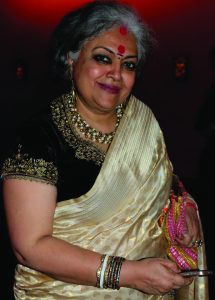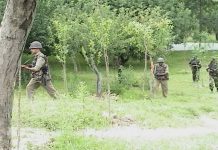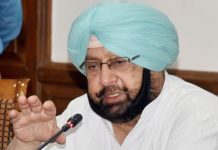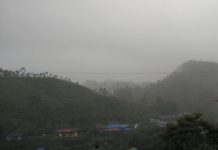 As I hold this latest book of Alka Pande, Body Sutra –Tracing The Human Form Through Art & Imagination (Rupa), the very first word that comes out rather too spontaneously is ‘Magnificent!’ Yes, it is a superb mix of great production-cum-photographs cum text. Making this book stand out, sleek and suave.
As I hold this latest book of Alka Pande, Body Sutra –Tracing The Human Form Through Art & Imagination (Rupa), the very first word that comes out rather too spontaneously is ‘Magnificent!’ Yes, it is a superb mix of great production-cum-photographs cum text. Making this book stand out, sleek and suave.
And in the preface to this book, Alka Pande traces out the backgrounders to the ‘whys’ she ventured to write this full-fledged volume on the Indian body. “Body Sutra emerges from my many years of engagement with art history; first, as an academic and then as a curator, engaged deeply with Indian aesthetics.
“Having trained in both Indian classical music and dance, I believe that the human body is a holistic source of inspiration for poets, writers and performing artist in the Indian subcontinent. In my doctoral research, I came across numerous representations of the Indian body in literature and artistic manifestations through the centuries.
“The commissioning of this book on the Indian body is, in some ways, the natural fruition of my doctoral work, which interrogates the androgynous image of Shiva Ardhanarishvara wherein the primordial god, Shiva appears in a perfect representation of half- man, half- woman…”
In fact, this volume is not just a visual treat with an array of vast ranging images, but it can also be termed an archival treasure for a researcher, for a social scientist and, of course, for an art lover, as there stands out the entire array to the Indian body… the varying aspects to its beauty, its divinity, and, of course, the crucial artistic and literary and spiritual and philosophical dimensions.
And Alka does so by indulging in a combination of words and verse and, of course, via images –“In Body Sutra, I have traced the shifting patterns of representation of the body in Indian art and literature through the survey of over two hundred, eclectically chosen key images which provide an insight into the pluralistic culture of the country.”
I liked the webbing and inter-webbing of prose and poetry and pictures that Alka has so very generously used. In fact, some very offbeat verse lies well tucked in the pages of this volume. Verse on the body and its movements and its very attract. Verse from the yesteryears to our very own.
Leaving you readers with this poem of the last Mughal Emperor of India, Bahadur Shah Zafar, which lies tucked in this volume. Titled The Naked Sword, it’s been translated by Raza Mir in The Taste of Words.
“Her hair’s parting a naked sword, its fragrance is like that/
Its styling like the wrath of God, its fall is just like that /
Her every word is packed with heat, her pride is beauteous too/
She enters like Armageddon, hips swaying just like that./
The flowing rivers know her well, sunbeams confide in her/
Her shirt is a diaphanous curse, her bangles chink just like that./
Her siren songs announce my doom, her rhythms take my life/
Her dance causes a hundred fights, her ankles chime just like that.”
letters@tehelka.com













